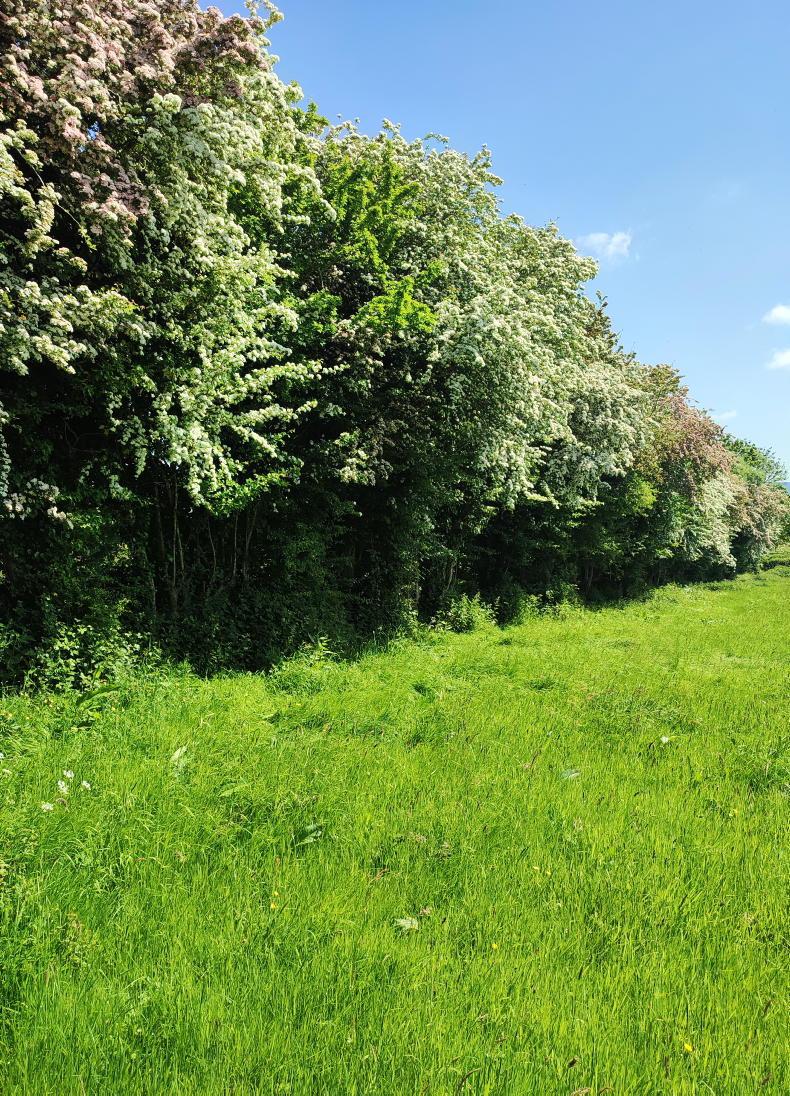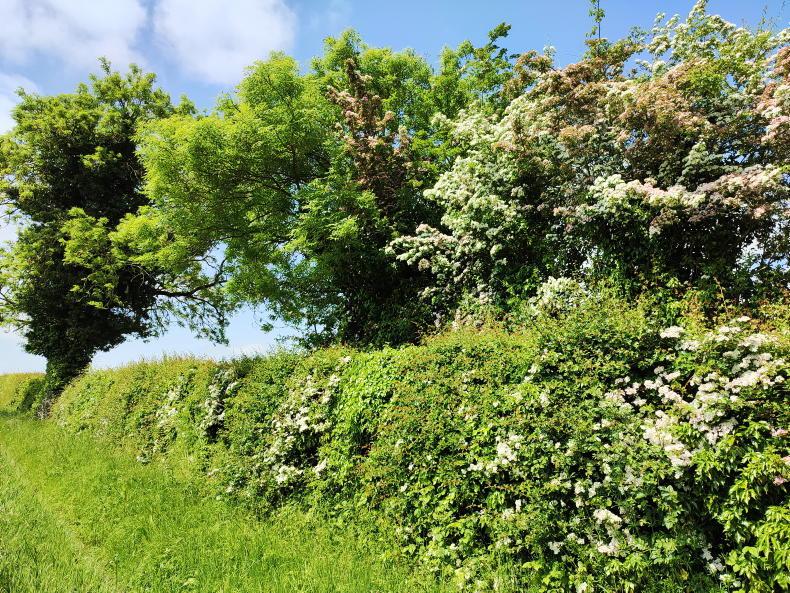Dramatic and damaging flooding events at the end of last year have reopened the debate on the best measures to prevent or limit future devastation to homes, businesses and agriculture.
While some of the severity of the floods may be attributed to exceptionally heavy and unrelenting rain falling in a short period (a pattern which is predicted for the future), other factors play a role in the sudden and catastrophic river level rises witnessed in these and similar cases. Understanding these factors can help with the design of flood prevention measures at a national level.
Land drainage and the straightening and ‘canalisation’ of rivers and streams increases land use and crop yields, but can have unintended negative effects by shifting water more quickly downstream. This can lead to massively increased volumes passing through riverside towns and villages, and the saturation of flood plains and breaching of riverbanks.
Land use change
Land use change is also known to play a role here. For example, scrub, woodland, and hedgerows play an important and previously unrecognised role in flood prevention – their removal for agricultural expansion can greatly increase rapid runoff of water from farmland.
This is because tree and hedge roots significantly increase the permeability of soil to allow water to penetrate and be absorbed. In addition, they successfully intercept the loss of both soil particles and also polluting nutrients such as nitrogen into streams and rivers.
A further factor is the compacting effect of increasingly heavy machinery leading to reduced soil permeability to water and thus more rapid runoff.
Urban runoff
Urban and industrial surface water runoff is another major contributor to flooding and water pollution. Roads, streets, car parks and roofs all add to the load on swollen rivers unless active measures are implemented to collect or divert the flow.
What can be done? In the urban context, there are a number of solutions called sustainable drainage systems (SuDS) and consist of a range of clever technologies including permeable surface materials, rain gardens and specially constructed runoff soakage channels called swales.
SuDS measures also need to be applied to all new farm building projects without exception, including the use of ‘wetland planted buffer zones’ which can both arrest flood runoff as well as filter out harmful pollutant from farmyards if planted with reeds and bulrushes. Irish research in this area by Feidhlim Harty and his team have demonstrated the value of these systems at a farm scale for both flooding and farmyard pollution control.

Tree and hedge roots significantly increase the permeability of soil to allow water to penetrate and be absorbed.
Also in the farming context, the removal of woody vegetation, especially woodland and hedgerows along land contours should be avoided. Conversely, the planting of new hedgerows and native tree lines should be considered, especially on land which is prone to water and soil runoff.
Buffer strips along field margins also have an important role here due to their flood reducing effects which are similar to the effects of scrub, trees and hedges.
Every lost tree, hedge and patch of scrub translates into more flood water
.
There is a role for much greater incentives in farm payment schemes to encourage tree and hedge planting.
Existing hedgerows need greater protection and should receive CAP payments commensurate with their size, quality and density – a measure which was excluded from the current CAP.
Such financial encouragement would help mitigate any real or perceived losses due to land being used for flood control and nature restoration. Payments for landowners to rewet or hold water on their land are also part of the wider land use solution to flooding.
Agroforestry
Agroforestry is an expanding area where trees are combined with crops or livestock on the same land with significant economic and ecological benefits, including flood control.
In one example from the Agri-Food and Biosciences Institute site in Co Armagh, Dr Jim McAdam’s research team found that wide-spaced trees with productive, grazed pasture underneath had significantly more ability to soak away water than pasture alone with no trees.
This benefit was measured down through the soil profile as deep as 76cm and resulted in an extension in the length of the grazing season of about 15 weeks. So the potential of trees to act as a flood mitigation measure can be clearly seen, and with good evidence from this island.
A further opportunity arises with the OPW flood plans for the country’s 122 river catchments. As currently configured, these rely almost exclusively upon downstream engineered solutions to flooding, namely concrete walls, embankments and dredging of riverbeds.
The incorporation of nature based flood solutions (NBS) is seen by OPW flood engineers as problematic because of the difficulty of precisely modelling and quantifying their effects against a ‘one in 100 year’ flooding event (the test against which flood plans are measured).
Nature-based solutions include the contour planting of trees and other vegetation as well as the creation of a variety of upstream water retention ponds and swales and so called runoff attenuation measures which delay the release of water.
While there are examples of the successful use of these solutions in other countries, for example Pickering in North Yorkshire and Pontbren in Wales, the OPW remains disappointingly cautious about their use, even in conjunction with engineered solutions.
Land use survey
The Government-led land use survey recently commenced its second phase which “will seek to identify the demands on land to inform policies for land use across key Government objectives, improving socioeconomic, climate, biodiversity, water and air quality outcomes”.
It is to be hoped that the final report from this review will take account of the opportunities for flood reduction offered by nature based solutions including agroforestry.
In summary, Hedgerows Ireland believes that the flood protection benefits of trees, hedgerows, scrub and agroforestry are vitally important in the overall context of flood protection, and that when their multiple other values are considered, they more than justify their use of land.
Dramatic and damaging flooding events at the end of last year have reopened the debate on the best measures to prevent or limit future devastation to homes, businesses and agriculture.
While some of the severity of the floods may be attributed to exceptionally heavy and unrelenting rain falling in a short period (a pattern which is predicted for the future), other factors play a role in the sudden and catastrophic river level rises witnessed in these and similar cases. Understanding these factors can help with the design of flood prevention measures at a national level.
Land drainage and the straightening and ‘canalisation’ of rivers and streams increases land use and crop yields, but can have unintended negative effects by shifting water more quickly downstream. This can lead to massively increased volumes passing through riverside towns and villages, and the saturation of flood plains and breaching of riverbanks.
Land use change
Land use change is also known to play a role here. For example, scrub, woodland, and hedgerows play an important and previously unrecognised role in flood prevention – their removal for agricultural expansion can greatly increase rapid runoff of water from farmland.
This is because tree and hedge roots significantly increase the permeability of soil to allow water to penetrate and be absorbed. In addition, they successfully intercept the loss of both soil particles and also polluting nutrients such as nitrogen into streams and rivers.
A further factor is the compacting effect of increasingly heavy machinery leading to reduced soil permeability to water and thus more rapid runoff.
Urban runoff
Urban and industrial surface water runoff is another major contributor to flooding and water pollution. Roads, streets, car parks and roofs all add to the load on swollen rivers unless active measures are implemented to collect or divert the flow.
What can be done? In the urban context, there are a number of solutions called sustainable drainage systems (SuDS) and consist of a range of clever technologies including permeable surface materials, rain gardens and specially constructed runoff soakage channels called swales.
SuDS measures also need to be applied to all new farm building projects without exception, including the use of ‘wetland planted buffer zones’ which can both arrest flood runoff as well as filter out harmful pollutant from farmyards if planted with reeds and bulrushes. Irish research in this area by Feidhlim Harty and his team have demonstrated the value of these systems at a farm scale for both flooding and farmyard pollution control.

Tree and hedge roots significantly increase the permeability of soil to allow water to penetrate and be absorbed.
Also in the farming context, the removal of woody vegetation, especially woodland and hedgerows along land contours should be avoided. Conversely, the planting of new hedgerows and native tree lines should be considered, especially on land which is prone to water and soil runoff.
Buffer strips along field margins also have an important role here due to their flood reducing effects which are similar to the effects of scrub, trees and hedges.
Every lost tree, hedge and patch of scrub translates into more flood water
.
There is a role for much greater incentives in farm payment schemes to encourage tree and hedge planting.
Existing hedgerows need greater protection and should receive CAP payments commensurate with their size, quality and density – a measure which was excluded from the current CAP.
Such financial encouragement would help mitigate any real or perceived losses due to land being used for flood control and nature restoration. Payments for landowners to rewet or hold water on their land are also part of the wider land use solution to flooding.
Agroforestry
Agroforestry is an expanding area where trees are combined with crops or livestock on the same land with significant economic and ecological benefits, including flood control.
In one example from the Agri-Food and Biosciences Institute site in Co Armagh, Dr Jim McAdam’s research team found that wide-spaced trees with productive, grazed pasture underneath had significantly more ability to soak away water than pasture alone with no trees.
This benefit was measured down through the soil profile as deep as 76cm and resulted in an extension in the length of the grazing season of about 15 weeks. So the potential of trees to act as a flood mitigation measure can be clearly seen, and with good evidence from this island.
A further opportunity arises with the OPW flood plans for the country’s 122 river catchments. As currently configured, these rely almost exclusively upon downstream engineered solutions to flooding, namely concrete walls, embankments and dredging of riverbeds.
The incorporation of nature based flood solutions (NBS) is seen by OPW flood engineers as problematic because of the difficulty of precisely modelling and quantifying their effects against a ‘one in 100 year’ flooding event (the test against which flood plans are measured).
Nature-based solutions include the contour planting of trees and other vegetation as well as the creation of a variety of upstream water retention ponds and swales and so called runoff attenuation measures which delay the release of water.
While there are examples of the successful use of these solutions in other countries, for example Pickering in North Yorkshire and Pontbren in Wales, the OPW remains disappointingly cautious about their use, even in conjunction with engineered solutions.
Land use survey
The Government-led land use survey recently commenced its second phase which “will seek to identify the demands on land to inform policies for land use across key Government objectives, improving socioeconomic, climate, biodiversity, water and air quality outcomes”.
It is to be hoped that the final report from this review will take account of the opportunities for flood reduction offered by nature based solutions including agroforestry.
In summary, Hedgerows Ireland believes that the flood protection benefits of trees, hedgerows, scrub and agroforestry are vitally important in the overall context of flood protection, and that when their multiple other values are considered, they more than justify their use of land.







 This is a subscriber-only article
This is a subscriber-only article










SHARING OPTIONS: